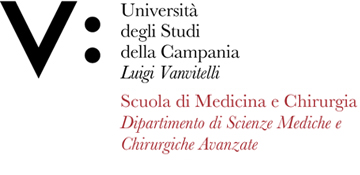Virginia TIRINO
Insegnamento di ANATOMIA UMANA
Corso di laurea in TECNICHE DI LABORATORIO BIOMEDICO (ABILITANTE ALLA PROFESSIONE SANITARIA DI TECNICO DI LABORATORIO BIOMEDICO)
SSD: BIO/16
CFU: 2,00
ORE PER UNITÀ DIDATTICA: 20,00
Periodo di Erogazione: Secondo Semestre
Italiano
| Lingua di insegnamento | Lingua Italiana |
| Contenuti | Il corso è improntato a fornire allo studente le nozioni minime e fondamentali relative ai diversi apparati del corpo umano, sempre in rapporto alla loro funzione e sviluppo. |
| Testi di riferimento | G. Papaccio – V. Tirino “Atlante di Istologia” Idelson Gnocchi |
| Obiettivi formativi | Al termine dell'insegnamento lo studente possiede competenze relative all'organizzazione dei tessuti e dei principali organi del corpo umano, indispensabile per affrontare lo studio delle successive discipline di base e cliniche. Conosce la morfologia dei diversi apparati in base allo studio dello sviluppo e anatomia dell'apparato locomotore e cardiovascolare; dell'anatomia funzionale e sviluppo degli apparati digerente, respiratorio, ed urogenitale. |
| Prerequisiti | Lo studente deve conoscere la struttura e funzione della cellula. |
| Metodologie didattiche | Lezioni frontali ed attività di tutoraggio. |
| Metodi di valutazione | Durante le lezioni, il docente effettua una serie di domande agli studenti per verificare il loro apprendimento riguardo gli argomenti del corso e, in sede, vengono riproposti quelli poco chiari con approfondimento. |
| Altre informazioni | A discrezione del docente potrebbero essere previsti laboratori di Anatomia Umana |
| Programma del corso | Anatomia e sviluppo della faccia: Apparato faringeo e suoi derivati: archi, solchi e tasche branchiali. |
English
| Teaching language | Italian Language |
| Contents | The course aims to provide the student with the minimum and fundamental notions related to human systems and organs, always in relation to their function and development. |
| Textbook and course materials | G. Papaccio – V. Tirino “Atlante di Istologia” Idelson Gnocchi |
| Course objectives | At the end of the course the student has skills related to the organization of the tissues and the main organs of the human body, which is essential to face the study of subsequent basic and clinical disciplines. He knows the morphology of the different apparatuses on the basis of the study of the development and anatomy of the musculoskeletal and cardiovascular apparatus; of functional anatomy and development of the digestive, respiratory, and urogenital systems. |
| Prerequisites | The student must know the structure and function of the cell. |
| Teaching methods | Lessons and tutorial activities |
| Evaluation methods | During the lessons, the teacher effects a series of questions to the students to verify their learning respect the matters of the course and unclear concerns are proposed in deep. |
| Other information | At the discretion of the teacher, laboratories of Human Anatomy could be provided |
| Course Syllabus | Anatomy and development of the face: Pharyngeal apparatus and its derivatives. |








